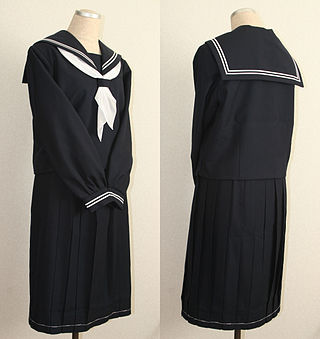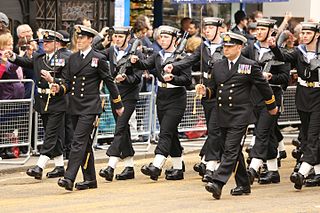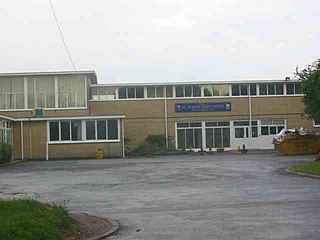History
Saint Marcellin Champagnat, a young priest in rural south-east France, founded the Marist Brothers to educate the poor. The Brothers then spread to many parts of the world, arriving in Cape Town in 1867. In 1929, (after the Brothers had opened St. Charles College, Pietermaritzburg), the Brothers opened St Henry's with Brother Paul Eusterius as principal. Since then the school has greatly expanded, particularly under the previous principal, Dr Anthony Akal, who was at the helm from 1982 until 2011. The school has a wonderful aspect, along the Ridge above Durban with a view over the City to the bay on the one side and inland towards the Valley of a Thousand Hills on the other.
The school started as a day school for boys, but has recently become co-educational. The Brothers gradually withdrew from the teaching life of the school (which is now under lay control) but still play a major part in the religious aspects of the school, upon which the College prides itself. The emphasis on religion, discipline and a strong sense of a "school-family" add to the school's appeal.
The school motto is Omnia Vincite, which means Conquer all difficulties.
The school colours are gold, navy blue and platinum. These are incorporated into the uniform of each phase.
Foundation Phase (Grade 000 – 0)
Boys wear navy blue tee shirts (without the school badge) and navy blue tracksuit pants or shorts.
Girls wear sleeveless blue checked dresses with a navy blue tee shirt underneath.
Junior and Senior Prep Phase (Grade 1 – 7)
Boys wear short-sleeved navy blue collar shirts, with the school badge on the front chest pocket, and navy blue shorts. Knee-length black socks with a fold-over blue band with two gold stripes are also worn. Black boys' lace-up school shoes are also worn.
Girls wear a short-sleeved checkered dress, a pattern of gold and platinum stripes. The sleeves and collar are edged in navy blue.
High School (Grade 8 – 12)
The boys wear long-sleeved or short-sleeved white shirts with the school tie. Gray trousers, grey socks and black lace-up school shoes are also worn. The school blazer, which is navy blue with gold stripes, must be worn when travelling to and from school, or in public, but may be removed during the day on the school grounds.
The girls wear long-sleeved or short-sleeved white shirts with the school tie. Gray knee-length skirts, white ankle-length socks, and black buckle shoes are worn. The same rules with regards to the blazer applies to girls.
The school blazer, badge and tie
The school blazer is single-breasted, with two silver buttons, and a small silver cuff button on each sleeve. It is navy blue with vertical gold stripes, with the school badge emblazoned onto the chest pocket.
The school badge consists of an intertwined "A" and "M" ( Ave Maria ) in gold, within an escutcheon. Beneath the shield is a scroll bearing the initials "M.B.D." for Marist Brothers' Durban.
The school tie is navy blue with diagonal gold stripes.
College Awards
The College may award students with Half Colours, Full Colours, Colours Blazers and Honours Blazers, for outstanding achievements in a variety of fields.
Half Colours
Half Colours may be awarded to a student who meets certain criteria, as laid down in the College's School Diary. For achieving Half Colours in a particular field, the student is presented with a Half Colours Tie, which is worn instead of the normal school tie. The Half Colours Tie is navy blue with the school badge and the field of achievement (for example, Cross Country) on it.
Full Colours
The criteria for Full Colours are far more stringent than those for Half Colours. Upon achieving Full Colours, the student is presented with a gold scroll bearing the name of the field of endeavour. This scroll is sewn onto the normal school blazer, below the school badge. Each Full Colours scroll bears a certain number of points, either 2 points or 4 points. These points are used to calculate whether an individual is qualified for a Colours Blazer.
Colours Blazer
To receive a Colours Blazer, a students must have accrued a minimum of 10 points.
Once obtained, the Colours Blazer replaces all the student's scrolls and the normal school blazer. Therefore, any existing scrolls or scrolls acquired after the student receives a Colours Blazer may not be sewn onto the Blazer. The Colours Blazer is navy blue. The Colours Blazer Badge also consists of the escutcheon and interwoven "A" and "M", but has gold laurel leaves around the shield.
Honours Blazer
To receive an Honours Blazer, a student must have received a Colours Blazer, and a Merit Scroll. The Head Boy, Head Girl and their deputies all automatically receive Honours Blazers upon their appointment.
The Honours Blazer is the College's highest award, and is not given to individuals based on their performance or achievements. It is only presented to students who show outstanding leadership qualities, and are involved in service both within the school, and in the greater community.
The Honours Blazer is navy blue with gold braiding around the sleeves, lapels and edges of the blazer. The badge for this blazer is completely different, as it is the school's individual badge, rather than the general Marist badge used worldwide.

Japanese (sailor) school uniforms replicate the traditional English clothing piece that is heavily based on the British Royal Navy sailor uniform. These school uniforms were used in Japan in the late 19th century, replacing the traditional kimono. Today, school uniforms are common in many Japanese public and private schools. The Japanese word for this type of uniform is seifuku (制服).

Mess dress uniform is the most formal type of evening-wear uniform used by military personnel, police personnel, and other uniformed services members. It frequently consists of a mess jacket, trousers, white dress shirt and a black bow tie, along with orders and medals insignia. Design may depend on regiment or service branch, e.g. army, navy, air force, marines, etc. In modern Western dress codes, mess dress uniform is the supplementary alternative equivalent to the civilian black tie for evening wear. Mess dress uniforms are typically less formal than full dress uniform, but more formal than service dress uniform.

A Catholic school uniform in North America typically consists of a pleated and tartan skirt or jumper dress, Mary Jane or saddle shoes, a button-down shirt, and a sweater for girls, while boys' uniforms consist of a button-down shirt, a necktie, and dark pants. Actual school uniforms vary widely by location and individual school.

A blazer is a type of lightweight sport jacket. Originally a scarlet jacket worn in club or plain colours when boating or cricketing, the garment gradually lost its connection with sportswear from the 1930s onward to enter classic style, and the look came to be associated with the lifestyle of wealthy elites.
Bishop Douglass Catholic School is a Roman Catholic co-educational secondary school and sixth form, situated in East Finchley area of the London Borough of Barnet, England. Its current Headmaster is Martin Tissot, a former pupil at the school.
The uniforms of the Canadian Armed Forces are the official dress worn by members of Canada's military while on duty.

A physical training uniform is a military or organizational uniform used during exercise, calisthenics, drills, and in some cases, very casual periods of time. Most militaries, especially the United States Armed Forces and their auxiliaries require use of a physical training (PT) uniform during unit exercise. All items worn by military personnel conducting PT as a group are subject to uniformity, at commander discretions, however, some U.S. military units produce unique T-shirts with their unit insignia and motto, and for special events, this shirt is part of the uniform. Occasionally, exercise will also be conducted in that branch's utility uniforms, normally with the blouse removed and the undershirt exposed. For unit runs, esprit de corps or special occasions, commanders may have personnel wear unique T-shirts with the distinctive unit insignia and unit colors.
Christ Church School is a private coeducational prep school located in Mumbai, India. It is a Christian school, founded in 1815, under the auspices of the Bombay Education Society. It has close to 3800 students, all of whom are night scholars. The school is twinned with Barnes School, in Deolali, Nashik. Both schools follow the ICSE curriculum. It is located in Byculla, just ahead of the JJ flyover. The school is located on Clare Road, or as it is locally called, Mirza Ghalib Marg.
Strathmore School is Kenya's first multi-racial school, established in 1961 in the Lavington area of Nairobi. It began as a residential Sixth Form College offering British-styled A-level courses and in 1963 switched from the Cambridge School Certificate Examination to the London GCE. In 1977 it became a full-fledged Secondary school. In 1988, the school began offering education under the KCSE - Kenya Certificate of Secondary Education - curricula which it follows to date. The first batch of Primary school students entered in 1987. It no longer has any boarders.

Campion School, Bhopal is a private Catholic primary and secondary school for boys located in Bhopal, in the state of Madhya Pradesh, India. The school was founded by the Jesuits in July 1965 and is one of the oldest schools in Bhopal. Campion School is affiliated with the Central Board of Secondary Education (CBSE), and is among the best schools in the city, ranked as the best Boys Day School in Madhya Pradesh in a 2019 ranking by Education World India. Its campus is spread over 49 acres (20 ha) in the locality of Arera Colony.

St David's Marist is a private English medium Roman Catholic preparatory and high school for boys in Inanda, a suburb of Sandton, South Africa. The school was established in 1941 by the Marist Brothers.

The uniforms of the Royal Navy have evolved gradually since the first uniform regulations for officers were issued in 1748. The predominant colours of Royal Navy uniforms are navy blue and white. Since reforms in 1997 male and female ratings have worn the same ceremonial uniform.

Eden College Durban is an independent school for boys and girls located in Glenmore, Durban, KwaZulu-Natal, in the Republic of South Africa. It comprises a pre-primary school, a preparatory school, a middle school and a college. Eden College Durban was previously called Crawford College, Durban until 2007 and Carmel College Durban before that. Eden College has just under 500 pupils.

St Albans Girls' School, usually referred to as STAGS, is a girls' secondary school in St Albans, Hertfordshire. It was formerly known as "St Albans Girls' Grammar School."

Cheltenham Secondary College is a co-educational high school in Cheltenham, Victoria, Australia, catering for students in years 7 to 12. The school officially opened in 1959 as 'Cheltenham High School', and then later changed its name to Cheltenham Secondary College. The school participates in the Windsor-Cheltenham Exchange, an exchange between Avenues College in Adelaide and Cheltenham where a range of sports and other activities are played out over a week to see who will win the Exchange Shield, Captains Plate and Exchange Cup.
Harrison College is a co-educational grammar school in Bridgetown, Barbados. Founded in 1733, the school takes its name from Thomas Harrison, a Bridgetown merchant, who intended it to serve as "A Public and Free School for the poor and indigent boys of the parish".
Saint Mary's College is a high school located in Above Rocks in Saint Catherine, Jamaica. It was founded in 1955 by its first principal, Father Edmund Cheney S.J. of St. Mary's Mission Catholic church.

School uniforms in Sri Lanka were first introduced in the late 19th century. Today, school uniforms are almost universal in the Sri Lankan public and private school systems. All public and private schools maintains almost a singular uniform design in the color of white with few individual characteristics for boys and a few variation designs in white for girls.

School uniform is a practice that dates to the 16th century in England. Charity schools such Christ's Hospital, founded in 1552 in London, were among the first schools to use a uniform for their students. The earliest documented proof of institutionalised use of a standard academic dress dates back to 1222 when the Archbishop of Canterbury ordered wearing of the cappa clausa.

Civil Aviation School and College is an educational institution located in Tejgaon, Dhaka, Bangladesh. Situated on Old Airport Road, the school is operated by the Civil Aviation Authority of Bangladesh (CAAB). It caters to students from primary through higher secondary levels and offers instruction in both Bengali and English.














